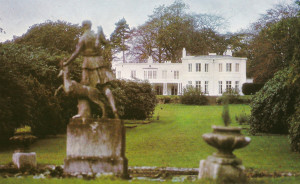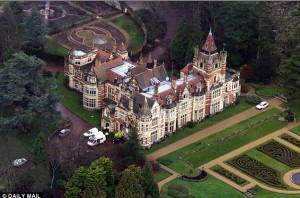Those lyrics weren’t written by a heartsick bloke waiting for his lover to come home. They were composed by an artist recalling his boyhood days in a working-class London neighborhood, waiting for his tireless dad to return from his Sunday morning trudge to the local junk market.
You were sorting through the odds and ends,
You was looking for a bargain.
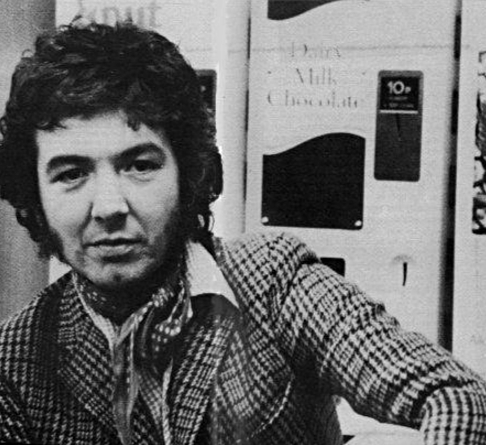 Ronnie Lane, the artist once described by Mojo writer Wayne Pernu as “the East End urchin with the pastoral vision,” wrote those lyrics for a song called “Debris” (the Brits pronounce it DEB-ree). The Debris was a term used by the locals to describe a makeshift market thrown together on the bleak streets of a city still bearing very visible scars of the WWII Blitz.
Ronnie Lane, the artist once described by Mojo writer Wayne Pernu as “the East End urchin with the pastoral vision,” wrote those lyrics for a song called “Debris” (the Brits pronounce it DEB-ree). The Debris was a term used by the locals to describe a makeshift market thrown together on the bleak streets of a city still bearing very visible scars of the WWII Blitz.
To a child it must have seemed a far-away, almost magical place, chock-a-block with the kinds of utilitarian items that imaginative kids transform into playthings…the types of twisted, tarnished bric-a-brac treasures that tykes like me once stored in old King Edward cigar boxes.
I went there and back,
Just to see how far it was.
And you, you tried to tell me,
But I had to learn for myself.
Now, in case you were absent from school the day your history teacher presented the chapter on Pioneers of 1960s Mod Culture, allow me to tell you more about the sensitive fellow who penned those poignant words. Ronnie Lane was a singer, songwriter and bass player for The Small Faces, an early British mod-rock/R&B unit composed of singer Steve Marriott, drummer Kenney Jones, and keyboardist Ian McLagan. The group’s name derived from the fact that all the boys were under 5’5”. A face was ’60s London slang for a particularly stylish mod rocker. Put it all together and you’ve got four Small Faces.
Ronnie was not only the band’s co-founder, he was its heart and soul. And it wasn’t just because he wrote or co-wrote all of the group’s original material. No, there was something else. He had a kind of sweet-sad weathered countenance: a spotty, sun-starved face, and bad teeth typical of all the Queen’s subjects who relied upon Britain’s publicly-funded National Health system. Or maybe the physical shortcomings stemmed from years of post-war food shortages and rationing.
And compared to his mod mates, Ronnie’s hair always looked like the girl next door had cut it as practice for her cosmetology exam. In short, he looked POOR. And to me, that meant he had soul.
Years later, when I had access to music magazines and male rock-fanatic friends, I learned that my assessment of him was correct. He was not only poor, he had a home life wracked by illness. Ronnie’s dad Stan was a truck driver who worked long days and even longer nights, tending to the health of his wife Elsie and son Stanley, Jr., both of whom suffered from multiple sclerosis.
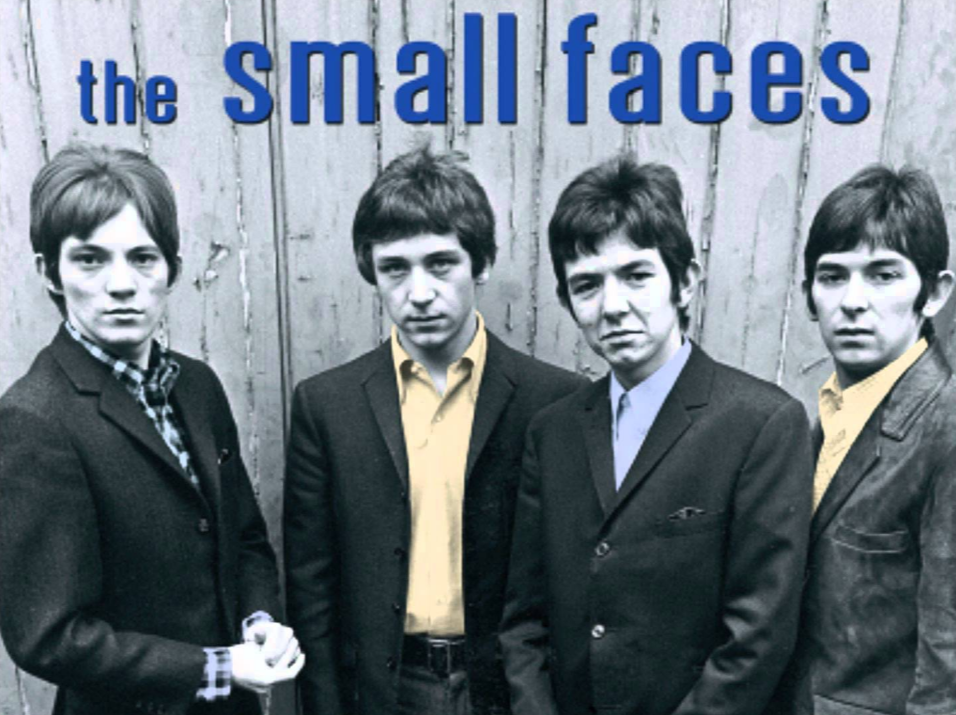 Throughout his life, Ronnie referred to his persevering, jovial dad as a saint. When Lane and Marriott began conceptualizing The Small Faces’ seminal concept LP “Ogden’s Nut Gone Flake,” in late 1967, it came as no surprise that the central character — Happiness Stan, who ventures off to find the missing half of the moon — would reflect the image of Ronnie’s dad.
Throughout his life, Ronnie referred to his persevering, jovial dad as a saint. When Lane and Marriott began conceptualizing The Small Faces’ seminal concept LP “Ogden’s Nut Gone Flake,” in late 1967, it came as no surprise that the central character — Happiness Stan, who ventures off to find the missing half of the moon — would reflect the image of Ronnie’s dad.
But “Debris” is the rocker’s true paean to the parent who once told him that if he learned to play an instrument he’d always have friends. It turned out the boy would never have a closer one than Happiness Stan himself.
Oh, you was my hero!
Now you are my good friend.
I’ve been there and back,
And I know how far it is.
“Debris” was featured on the 1971 album “A Nod is as Good as a Wink….to a Blind Horse.” By this point, the band had morphed from Small Faces to Faces, following the departure of Steve Marriott and the addition of frontman Rod Stewart and guitarist Ronnie Wood.
After the release of The Faces’ fourth album, “Ooh La La,” in 1973, Ronnie Lane quit the group, transitioning from sharp-dressed electric rocker to gypsy-garbed backroads troubadour. He formed a folky country-blues band called Slim Chance (the name itself reflected Ronnie’s sharp sense of irony), and launched a carnival-like tour called “The Passing Show,” complete with circus tents, barkers and an occasional ringmaster. By 1976, Ronnie, like his mother and brother before him, had been diagnosed with multiple sclerosis, but continued to record and tour with such artists as Eric Clapton and Pete Townshend.
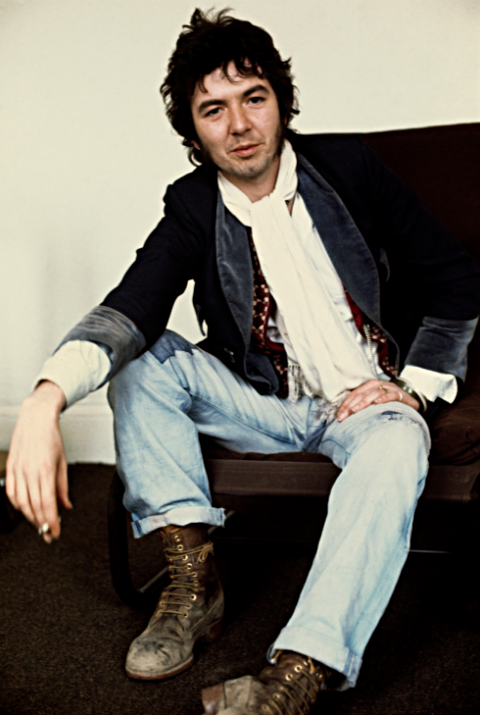 Ronnie spent the final 13 years of his life in America, settling first in Texas and later Colorado. Wheelchair-bound, he remained as active as possible, playing, writing and recording through 1992. By this point, Jimmy Page, Rod Stewart and Ronnie Wood were funding his medical care. He succumbed to pneumonia during late stages of MS in 1997, at age 51.
Ronnie spent the final 13 years of his life in America, settling first in Texas and later Colorado. Wheelchair-bound, he remained as active as possible, playing, writing and recording through 1992. By this point, Jimmy Page, Rod Stewart and Ronnie Wood were funding his medical care. He succumbed to pneumonia during late stages of MS in 1997, at age 51.
Ronnie’s “Debris” was always a mainstay on my Music for Mood-Spinners mix-tapes (parts 1, 2, etc.), and later on my iTunes playlist of the same name. (And I’m not kidding. I DO have such a playlist, and I fire it up every time I crave some luscious, rainy-day soul-stirring.) “Debris” is the most tender, beautifully arranged song in the entire Small Faces/Faces catalog. When I eventually learned that Ronnie Lane penned this song as an ode to his father, it took on even deeper significance. All of that old black-and-white newsreel footage of bleak post-war Europe flooded my head as I listened to Ronnie sing about waiting at the top of the stairs for his dad to return, second-hand goods in tow, to the family that so desperately needed him.
But I left you on the Debris.
Now, we both know you got no money.
And I wonder what you would have done
Without me hanging around.
Sleep well, Ronnie Lane. There is a special place in my heart for people like you who so movingly honor the ones who enriched their lives.
Here’s the original “Debris” track,” from The Faces’ “A Nod is as Good as a Wink.”
And here’s Ronnie performing the song live with his band Slim Chance. The clip includes a performance of “Ooh La La,” another gem he wrote during his Faces days.
© Dana Spiardi, April 1, 2015
]]>
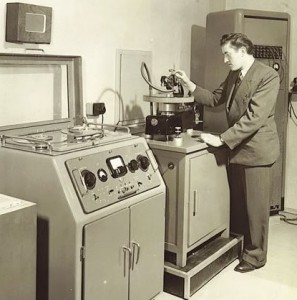 The tale begins with a man named Joe Meek, a British songwriter and record producer who pioneered the use of quirky production techniques – echo, reverb, sampling, multiple overdubbing – in recordings that he made in his home studio above a leather goods shop in London. He wrote and produced the Tornados’ 1962 novelty hit “Telstar,” which featured a clavioline, an electronic keyboard that produced a sound that all Martians were surely grooving to at that time. “Telstar” went on to sell 5 million copies and was only the second British single to hit the number one spot on the U.S charts in the pre-Beatles era. (The first was the clarinet instrumental, “Stranger on the Shore.”) Meek’s work on “Telstar” won him Britain’s most prestigious songwriting honor, the Ivor Novello award. He worked with artists such as Petula Clark, Gene Vincent, and Lonnie Donegan, and was the first audio man to record a little known blaster named Tom Jones. Meek also wrote what might be the first concept album, “I Hear a New World,” which he described as an outer space music fantasy. It was recorded by The Blue Men in 1959.
The tale begins with a man named Joe Meek, a British songwriter and record producer who pioneered the use of quirky production techniques – echo, reverb, sampling, multiple overdubbing – in recordings that he made in his home studio above a leather goods shop in London. He wrote and produced the Tornados’ 1962 novelty hit “Telstar,” which featured a clavioline, an electronic keyboard that produced a sound that all Martians were surely grooving to at that time. “Telstar” went on to sell 5 million copies and was only the second British single to hit the number one spot on the U.S charts in the pre-Beatles era. (The first was the clarinet instrumental, “Stranger on the Shore.”) Meek’s work on “Telstar” won him Britain’s most prestigious songwriting honor, the Ivor Novello award. He worked with artists such as Petula Clark, Gene Vincent, and Lonnie Donegan, and was the first audio man to record a little known blaster named Tom Jones. Meek also wrote what might be the first concept album, “I Hear a New World,” which he described as an outer space music fantasy. It was recorded by The Blue Men in 1959.
I guess you could call Joe Meek the British equivalent of American record producer Phil Spector. Both men were as loony as they were innovative. Meek was a drug-using, manic-depressive, rageaholic, closeted homosexual who suffered from paranoia and feared that industry insiders were wiretapping his rooms to steal his ideas. He was also an occult junkie. He believed he could communicate with the dead, and sometimes took tape recorders to graveyards to capture the voices of departed souls. On night in early 1958, he was reading Tarot cards with some friends, when he received a premonition that Buddy Holly, one of his idols, was scheduled to meet his maker on February 3 — no year given. He tried desperately to get in touch with his myopic hero, but Holly either didn’t get the message, or dismissed Meek’s warning as the ranting of a nut-job.
Well, we all know what happens next. A small airplane transporting Buddy Holly, Ritchie Valens and J. P. “The Big Bopper” Richardson from Clear Lake, Iowa, to a show in Moorhead, Minnesota, crashes just after takeoff on February 3, 1959. The “day the music died” inspired a young singer named Don McLean to write the 1971 hit that would guarantee he’d never have to work again, “American Pie.” Indeed, we lost one of our greatest and most influential artists when Holly checked out. (And, just as tragically, we had to endure McLean’s 8-minute “American Pie” for the next 40 years.)
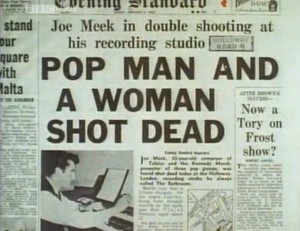 Flash forward to the mid-60s. Joe Meek’s career was in steady decline. He risked losing all royalties from “Telstar” when French composer Jean Ledrut sued him for plagiarism, claiming “Telstar” was a ripoff of his song, “La Marche d’Austerlitz.” The once-respected British producer was desperate and depressed. In a macabre twist of fate, he ended up pulling his own plug on the 8th anniversary of Buddy Holly’s tragic demise. On February 3, 1967, Joe Meek – who slept with a gun under his bed – shot his landlady Violet Shenton and then turned the gun on himself. Just what pushed Meek over the edge that day? Did he plan the murder-suicide for February 3? Did Mrs. Shenton nag him for being late with the rent? Did she complain just one time too many about the noise emanating from Meek’s upstairs recording studio?
Flash forward to the mid-60s. Joe Meek’s career was in steady decline. He risked losing all royalties from “Telstar” when French composer Jean Ledrut sued him for plagiarism, claiming “Telstar” was a ripoff of his song, “La Marche d’Austerlitz.” The once-respected British producer was desperate and depressed. In a macabre twist of fate, he ended up pulling his own plug on the 8th anniversary of Buddy Holly’s tragic demise. On February 3, 1967, Joe Meek – who slept with a gun under his bed – shot his landlady Violet Shenton and then turned the gun on himself. Just what pushed Meek over the edge that day? Did he plan the murder-suicide for February 3? Did Mrs. Shenton nag him for being late with the rent? Did she complain just one time too many about the noise emanating from Meek’s upstairs recording studio?
Well, who knows what drives crazy geniuses like Meek and Phil Spector to take up arms. Phil, that fright-wigged Wall of Sound wonder, is currently serving 19 years to life in a California state prison for shooting actress Lana Clarkson. Meek, being a polite Brit, saved the courts a lot of time and trouble by kindly taking his own life.
Joe Meek is virtually unknown among most rock fans, which is a shame, because his pioneering work in audio technology paved the way for all future experimental recording. The Beach Boys may have given us surf rock, but it was Joe Meek who gave us space rock.
This clip from a BBC documentary features Joe Meek talking about the early recording industry in the U.K.
© Dana Spiardi, Feb 3, 2014
]]>
Where a rock-n-roll martyr plays
You’ll find the enchanted neighborhood
Of Brian Jones’s drug-haze days.
Brian the posh, Brian the posh,
A randy little dandy – all fine, divine.
He’s Brian the posh, Brian the posh,
A ritzy little glitzy old soul.
I’d hate like hell to be sued by the Disney Empire for parodying their Winnie the Pooh tune, but what better way to introduce the tale of a Rolling Stone who spent his final days in the former domain of Pooh’s creator, author A. A. Milne? Were British society highbrows appalled by the idea of a long-haired rock guitarist/drug deviant romping the idyllic grounds that inspired Milne to create cutesy make-believe animal playmates for his son Christopher Robin? Probably. But it mattered not. The late 1960s marked the dawn of the Age of the Rock God, and like the deities of yore, they required grand pantheons. They found them in the form of once-venerated estates that dotted the tranquil British countryside. And the old gentry had no choice but to get over it.
In November 1968, Rolling Stones founder, multi-instrumentalist, and fashion plate Brian Jones purchased the Milne estate – Cotchford Farms in East Sussex- for £35,000 ($679,000 today). The 26-year-old musician was a train wreck of a man. He’d already been convicted twice for drug possession and had fathered at least five children with five different women by the time he was 23. British blues pioneer Alexis Korner described the once-beautiful lad as now looking like “a fat, mummified Louis XIV.” What better place for the delicate Brian to relax and play his music than the “House at Pooh Corner”?

He quickly set about renovating the mid-16th century abode to his mod liking. Several items from Brian’s upgrades remain today, including panes of colored glass and a still-functioning pink fluorescent light tube he put in one of the bathrooms. And of course, there’s the pool where Mr. Jones drowned on July 3, 1969, just weeks after his bandmates fired him for bad behavior. Whether Jones’s drowning was the result of his prodigious drug and alcohol intake, or a scuffle between him and building foreman Frank Thorogood, we’ll never know. But the death certainly casts an eerie shadow over the bucolic setting.
Alastair Johns, who purchased Cotchford Farm in 1970 and remained its guardian for 42 years, has plenty of interesting tales of Brian Jones fans who dropped by the house, unannounced, to pay homage to the rock star. He once told the Daily Telegraph, “On the whole the Brian Jones lot are incredibly nice and polite. They apologize for the intrusion. The Winnie the Pooh bunch, on the other hand, think they own the place. One afternoon we caught a couple in the garden who had lined up 16 teddy bears to photograph.”
But oh, that famous pool! Old utility bills show that Brian Jones purchased 4,000 gallons of oil trying to heat it during the 9 months he lived there. To finance its renovation, Johns and his wife Harriet sold the original pool tiles to the musician’s fans for £100 each. Imagine owning a piece of Brian’s death tank!
The 3,779-square-foot home and its 9.5 acres was put up for sale in 2014, listed at £2 million, or about $3.15 million. Picture yourself sitting in Christopher Robin’s garden, sipping port or smoking pot, and daydreaming about Eeyore and Piglet and Tigger, to the strains of Brian’s sitar work on “Paint it Black.” It doesn’t get any more surreal than that, folks.
Not to be upstaged by the guitarist he sacked, Mick Jagger spent £55,000 to acquire his own ostentatious crib, Stargroves, in 1970. This Hampshire County estate was the home of the Goddards, a landed family, from 1565 until about 1830. Oliver Cromwell, the 17th century Lord Protector of the Commonwealth of England, Scotland and Ireland, once slept there – back when it was quiet. Three hundred years later, Stargroves would be overrun with racket, when the Stones, Led Zeppelin, Deep Purple, and other rock groups recorded songs in a mobile recording studio installed on the grounds. Rod Stewart bought Stargroves in 1998, but never moved in because he was in the process of divorcing wife number 2, Rachel Hunter.
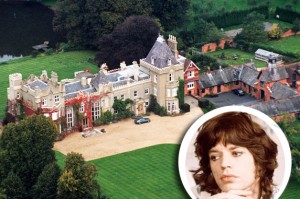
Several other Rolling Stones also inhabited pedigreed mansions. Low-profile drummer Charlie Watts purchased the one-time estate of Baron Shawcross, the lead British prosecutor at the Nuremberg War Crimes tribunal. And in 1968 Stones bassist Bill Wyman acquired Gedding Hall, below, a stately home that boasted a moat (alligators not included). Britain’s famous twin-brother gangsters, Ronnie and Reggie Kray, fled to the hall after killing Jack ‘The Hat’ McVitie in 1967.

One month after John Lennon married Yoko Ono, the Beatle purchased a quaint little love nest: the 72-acre Tittenhurst Park in Sunningdale, Ascot. The couple bought the £145,000 estate from Peter Cadbury, whose father Egbert was managing director of the famous chocolate company that bears his surname.
However, it turned out not to be such a sweet deal. The Lennons ended up spending twice the purchase price on renovations and additions, including the creation of a lake and the installation of a sound studio where John recorded his Imagine LP. He spent a mere two years in his stately home, selling it to Ringo Starr after he permanently relocated to New York City in 1971.
Beatle George Harrison may have felt musically overshadowed by bandmates Lennon and McCartney, but when it came to real estate, he trumped them all. In 1970 he purchased the grand Friar Park, a 120-room Victorian neo-Gothic mansion in Henley-on-Thames. Sir Frank Crisp, an eccentric lawyer, first owned the estate and designed many of its attractions, including an Elizabethan garden, a white garden, a Japanese garden, a rock garden, plus an assortment of unusual topiary and exotic plants. Other features included fountains, whimsical statuary, a sandstone replica of the Matterhorn, and caverns under the property’s lakes that revealed waterways and a grotto!
Upon Crisp’s death the estate passed to an order of Roman Catholic nuns who abandoned the home in the late 1960s, leaving it in such a state of disarray that it was scheduled for demolition. George and his first wife Patti set out to slowly renovate the massive estate. They completed only a handful of the many rooms, one of which George converted to a 16-track recording studio where he produced all of his albums from 1973 onward.
Through the years the Beatle became a passionate gardner, lovingly tending the grounds right up until his death in 2001. His second wife, Olivia, is devoted to maintaining the gardens that brought her husband such pleasure.
From peaceful gardens we move on to unholy houses — in particular, one purchased by Led Zeppelin’s Jimmy Page in 1971. The guitar wizard had long been fascinated with the work of English occultist, poet, novelist, and satanist Aleister Crowley. Between 1899 and 1913, the self-proclaimed “most wicked man in the world” owned Boleskin House, located on the shore of Loch Ness in Scotland. The late 18th century secluded estate was known to be a center of black magic and sorcery, and was the scene of several tragic deaths, both before and after Crowley’s ownership.
Jimmy Page once called Crowley “a misunderstood genius of the 20th century.” He believed the estate was haunted, but he’s long maintained that the house was possessed of demons well before Crowley purchased it to perform his black magic rituals. Said Page in a 1975 Rolling Stone interview, “There were two or three owners before Crowley moved into it. It was also a church that was burned to the ground with the congregation in it. Strange things have happened in that house that had nothing to do with Crowley. The bad vibes were already there. A man was beheaded there, and sometimes you can hear his head rolling down.” Well, at least now you know what inspired some of those mystical Zeppelin tunes and symbols.
Over the years, many a stiff-lipped British Lord and Lady no doubt proclaimed “there goes the neighborhood” when nouveau rich rockers began running wild in the country. If Downton Abbey stays on the air long enough, will we see benevolent Lord Grantham selling out to bad-ass Lemmy Kilmister?
This delightful music video of George Harrison’s “Crackerbox Palace” was filmed on the lovely grounds of Friar Park in 1976. Monty Python member Eric Idle directed it. In 1978, George put up the entire Friar Park estate as financial collateral to fund the Pythons’ “Life of Brian” after the project’s original investors backed out. Why? He said he simply wanted to see the film. Idle called it “the most expensive movie ticket in history.”
© Dana Spiardi, Jan 3, 2015
]]>
 “Tiny Dancer” is the opening track of 1971’s “Madman Across the Water.” It’s one of those “backseat openers,” as I call them. I’d leave a department store — either P.T. or Weston’s or Hills, in what I once thought was the Big Town of Indiana, PA — with my parents, climb into the backseat of whatever big old Cadillac Daddy was driving at the time, take the record out of the bag, slice open the cellophane covering with my thumbnail, and pore over every word and image on the sleeve and vinyl disc during the 30-minute ride back to our small-town, four-room apartment.
“Tiny Dancer” is the opening track of 1971’s “Madman Across the Water.” It’s one of those “backseat openers,” as I call them. I’d leave a department store — either P.T. or Weston’s or Hills, in what I once thought was the Big Town of Indiana, PA — with my parents, climb into the backseat of whatever big old Cadillac Daddy was driving at the time, take the record out of the bag, slice open the cellophane covering with my thumbnail, and pore over every word and image on the sleeve and vinyl disc during the 30-minute ride back to our small-town, four-room apartment.
“Madman” was one of those albums that stayed on the platter of my cheap Sears Silverstone record player for weeks on end. I eventually digitized the LP — without applying Dolby (I wanted to hear the snap, crackle, pop) — so that I could listen to it in its original format on all my “devices.” Now, check out this vid. In fact, watch it two or three times. For me, it’s AGERTSAT – A Good Enough Reason to Stay Alive Today!
© Dana Spiardi, May 22, 2017
]]>
 The charismatic musician began his recording career in 1965 with the Small Faces, a tight rock/R&B band comprised of singer Steve Marriott, bassist Ronnie Lane and drummer Kenney Jones – all of whom were of small stature. (“A Face” was a mid-’60s London slang term for a particularly stylish mod rocker.) The band morphed into Faces in 1969 when Rod Stewart replaced Marriott as frontman and Ronnie Wood joined on as guitarist. They were a crew of good-time, beer-drinking mates. The title of a Faces best-of CD, “Good Boys…When They’re Asleep,” pretty much summed it up. Said Rod in his memoir, “We were the first band to have a bar on stage, with a waiter serving us.”
The charismatic musician began his recording career in 1965 with the Small Faces, a tight rock/R&B band comprised of singer Steve Marriott, bassist Ronnie Lane and drummer Kenney Jones – all of whom were of small stature. (“A Face” was a mid-’60s London slang term for a particularly stylish mod rocker.) The band morphed into Faces in 1969 when Rod Stewart replaced Marriott as frontman and Ronnie Wood joined on as guitarist. They were a crew of good-time, beer-drinking mates. The title of a Faces best-of CD, “Good Boys…When They’re Asleep,” pretty much summed it up. Said Rod in his memoir, “We were the first band to have a bar on stage, with a waiter serving us.”
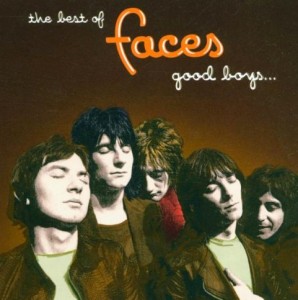 Following the breakup of Faces in 1975, Mac became a much sought-after sideman, touring and recording with artists like The Rolling Stones, Chuck Berry, Bob Dylan, Keith Richards’ New Barbarians, Jackson Browne, Joe Cocker, Melissa Etheridge, Bonnie Raitt, The Black Crowes, Thin Lizzy, Warren Zevon, and Bruce Springsteen. In 1977, this Rock and Roll Hall of Fame inductee launched his own group, The Bump Band. A long-time resident of Austin, he adored the U.S.A. and loved to play gigs from state to state. At the time of his death he was planning a tour to support his latest LP “United States.”
Following the breakup of Faces in 1975, Mac became a much sought-after sideman, touring and recording with artists like The Rolling Stones, Chuck Berry, Bob Dylan, Keith Richards’ New Barbarians, Jackson Browne, Joe Cocker, Melissa Etheridge, Bonnie Raitt, The Black Crowes, Thin Lizzy, Warren Zevon, and Bruce Springsteen. In 1977, this Rock and Roll Hall of Fame inductee launched his own group, The Bump Band. A long-time resident of Austin, he adored the U.S.A. and loved to play gigs from state to state. At the time of his death he was planning a tour to support his latest LP “United States.”
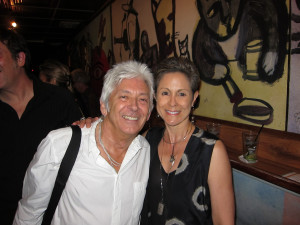 I was thrilled to meet Mac face-to-face in June 2013 following his intimate gig at The Tin Angel in Philadelphia (I even got a kiss – ooh la la!). He played lots of great tunes, including many original compositions and songs from his Faces days. He ended the show with my favorite, “You’re So Rude,” a number he co-wrote with the late Ronnie Lane. In between songs he told lots of funny stories about his life in rock-n-roll, including the tale of his first encounter with his fellow “small faces” in 1965: “They were in an office, and as I came ’round the door, Steve Marriott laughed and picked me up. Then, all three picked me up on their shoulders. I’d found my brothers, that’s the truth of it.” You can read more about his life and times in his 2000 memoir All the Rage: A Riotous Romp Through Rock & Roll History. He was quite the raconteur.
I was thrilled to meet Mac face-to-face in June 2013 following his intimate gig at The Tin Angel in Philadelphia (I even got a kiss – ooh la la!). He played lots of great tunes, including many original compositions and songs from his Faces days. He ended the show with my favorite, “You’re So Rude,” a number he co-wrote with the late Ronnie Lane. In between songs he told lots of funny stories about his life in rock-n-roll, including the tale of his first encounter with his fellow “small faces” in 1965: “They were in an office, and as I came ’round the door, Steve Marriott laughed and picked me up. Then, all three picked me up on their shoulders. I’d found my brothers, that’s the truth of it.” You can read more about his life and times in his 2000 memoir All the Rage: A Riotous Romp Through Rock & Roll History. He was quite the raconteur.
Rest in peace, magic Mac. You’re one of the special musicians who rocked my world from the time I was a tween. I love you and will miss you greatly.
Here’s the beautiful tear-jerker “Never Say Never,” that Mac wrote in memory of his wife Kim Kerrigan, who died in a car accident in 2006. (Factoid: Kim was the ex-wife of former Who drummer Keith Moon.)
I included this song on every mix tape I made for my friends back in the day. Here’s the scenario: a bloke takes his girl back to the house for a make-out session, when suddenly his parents arrive home unexpectedly. “What’s that noise? Why’d they come back so soon? Straighten your dress, you’re really looking a mess. I’ll wet my socks, pretend we just got caught in the rain. Oh, you’re so rude!” The original version of the tune was included on the Faces’ 1971 LP “A Nod Is As Good as a Wink…To a Blind Horse.” Mac performs this one with The Bump Band.
© Dana Spiardi, May 12, 2015
Photo in banner © Jim Chapin, 2012
]]>
